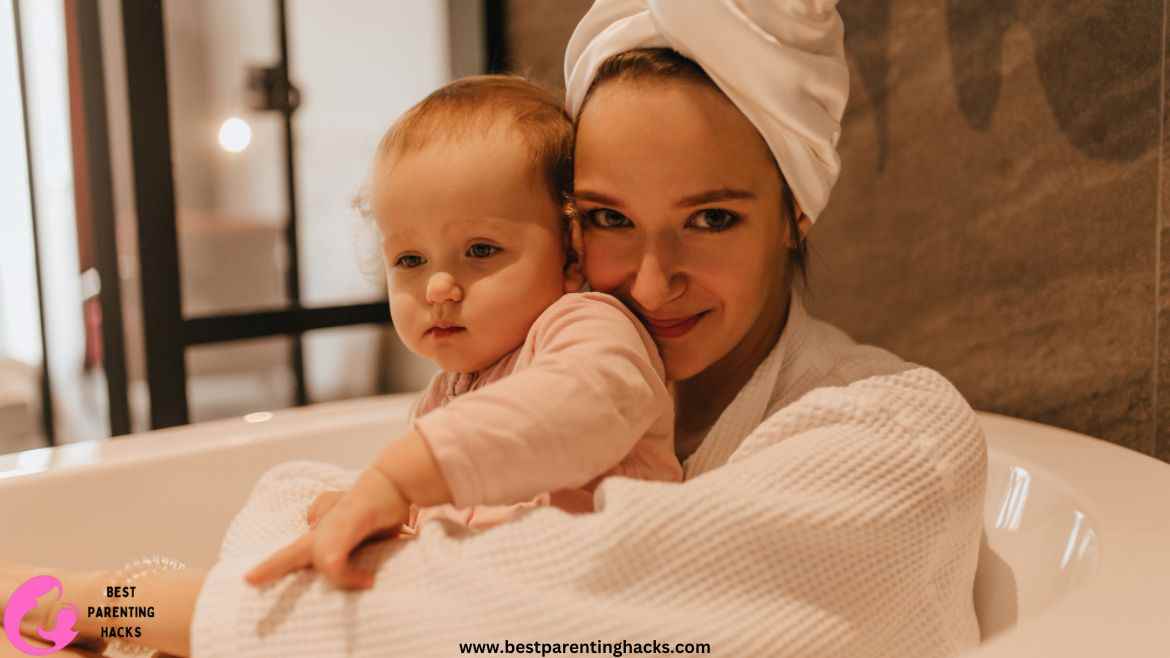Table of Contents
Looking after your baby’s needs can be both heartwarming and challenging, especially when it comes to bath time. This seemingly easy practice frequently becomes a test of tolerance and comprehension. Every step is a ballet of comfort and care, from the soft sprays of a warm bath to the warm embrace of a towel. But for many newborns, the change from bath time to dressing time can be a sharp difference, resulting in cries and frustration. Though frequent, even the most experienced parents might get confused by this period. Why does this occur? Is there a method to ease the baby’s and parent’s experience with this process?
Seeing things from the baby’s point of view and changing our methods will provide the solution. After experiencing the comforting warmth of a bath, babies often find the abrupt transition to dressing themselves unsettling and confusing. Establishing a habit and an atmosphere that facilitates this shift is crucial. We may turn this trying time into a chance for comfort and camaraderie by strategically altering the dressing procedure. In my view, the appropriate method promotes a baby’s general development by instilling a feeling of stability and routine in addition to soothing the infant.
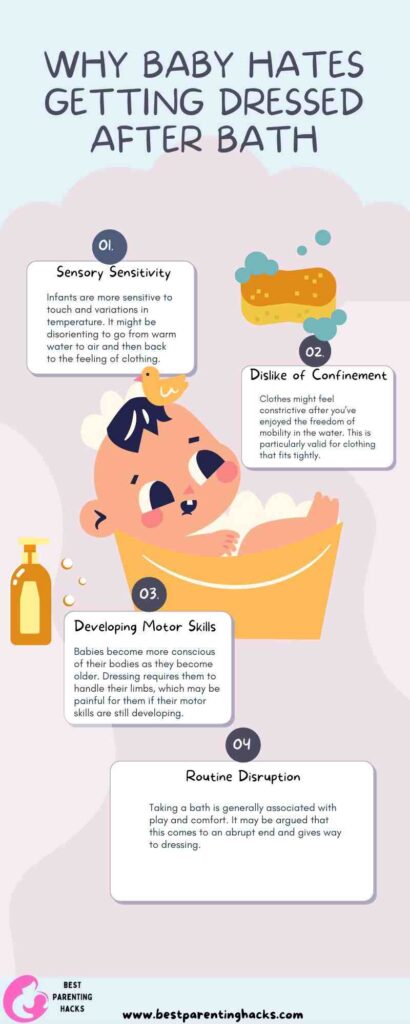
Understanding the Reasons Behind the Discomfort
Because of their growing senses, babies perceive the world in a different way than adults do. Bath time ends with a big sensory change: the water’s warm, weightless atmosphere gives way to the garments’ chilly, more constricting sensation. This shift may come as a shock and cause discomfort. Furthermore, compared to older children and adults, newborns’ skin is more sensitive, which makes them more vulnerable to pain from different textures and temperatures.
1. Sensory Sensitivity: Infants are more sensitive to touch and variations in temperature. It might be disorienting to go from warm water to air and then back to the feeling of clothing.
2. Dislike of Confinement: Clothes might feel constrictive after you’ve enjoyed the freedom of mobility in the water. This is particularly valid for clothing that fits tightly.
3. Developing Motor Skills: Babies become more conscious of their bodies as they become older. Dressing requires them to handle their limbs, which may be painful for them if their motor skills are still developing.
4. Routine Disruption: Taking a bath is generally associated with play and comfort. It may be argued that this comes to an abrupt end and gives way to dressing.
You Might Also Like to Read: What To Do When My Husband Gets Angry When Baby Cries?
Strategies to Ease the Operation
With the correct techniques, getting dressed and taking a bath can go more smoothly. It’s all about setting up a cozy space and a routine that the infant can look forward to and find reassuring.
1. Warm and Comfortable Environment: To reduce temperature fluctuations, keep the space warm. A few warm clothing and a towel may go a long way.
2. Distraction Techniques: Talk to your baby, play with toys, or sing to them. This may take their mind off of how uncomfortable getting dressed is.
3. Gentle Handling: Take care when handling your infant. Slow, gentle gestures might be more reassuring than abrupt ones.
4. Involving the Baby: As the child becomes older, allow them to take part in tasks like selecting a onesie or assisting with pulling an arm through a sleeve.
5. Consistent Routine: By creating a pattern that your infant can anticipate, you can lessen their resistance and worry.
You Might Also Like to Read: Can Frozen Breast Milk Upset Baby’s Tummy?
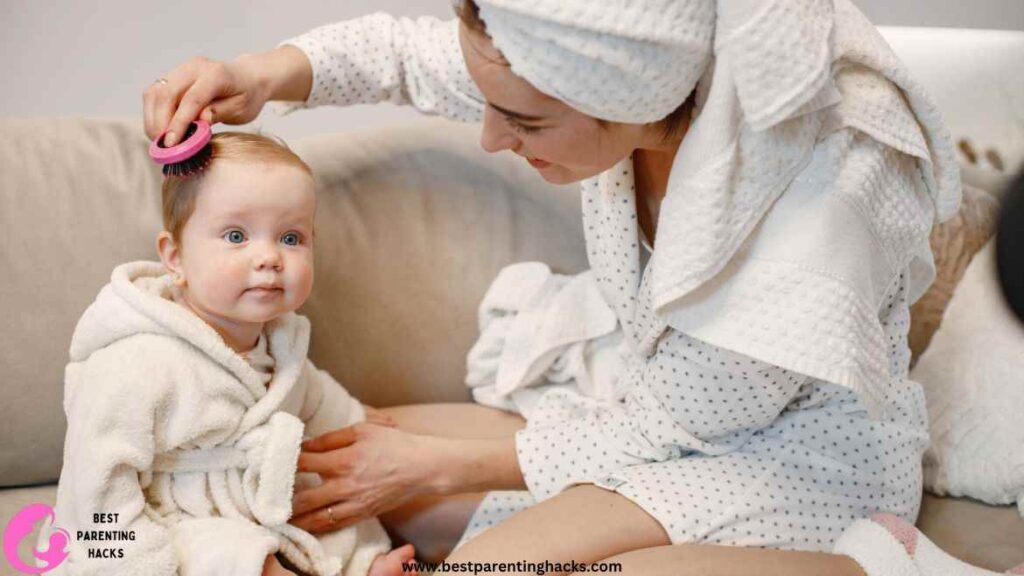
Timing and Routine Adjustments
Changing the bath time and routine can have a big effect on how your infant feels about changing clothes afterward.
1. Bath Time: Rather than right before or right after a meal, try washing your baby when they are most at ease.
2. Pre-Bath Activities: To make sure your infant is at ease before the bath, engage in soothing activities.
3. Post-Bath Routine: Before dressing, establish a calming routine that includes a mild massage or some quiet time.
4. Feeding Schedule: By coordinating bath time with feeding times, you can make sure your baby is satisfied and not starving while being dressed.
5. Sleep Considerations: Your infant is more prone to be agitated if they are sleep deprived. When they’re well-rested, schedule their bath time.
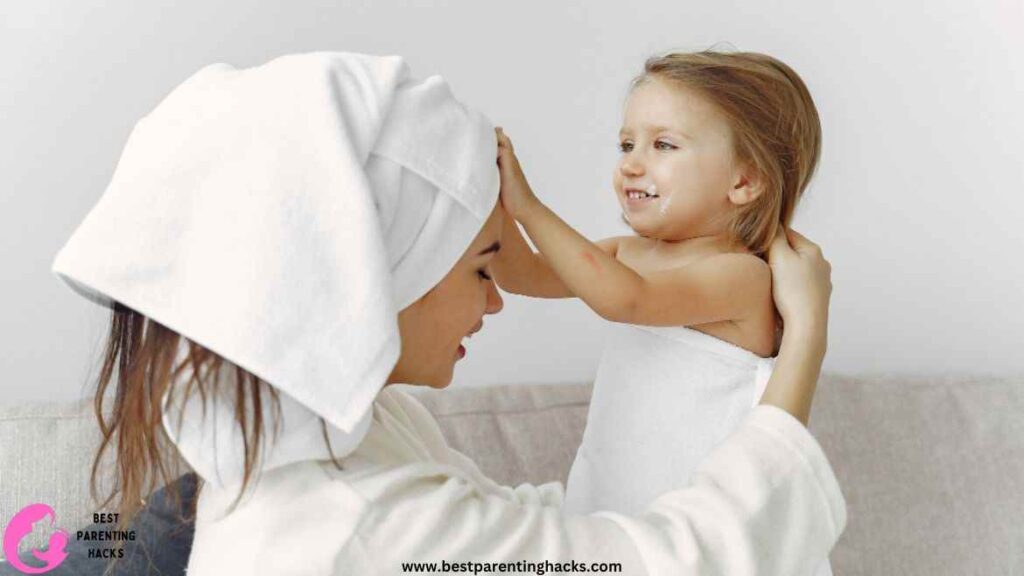
Clothing Choices
After bathing, the clothes you pick for your baby may make a big difference in how comfortable they are.
1. Fabric Choice: Select breathable, silky materials that are kind to the infant’s skin.
2. Easy-to-Wear Designs: Putting on and taking off clothing, such as items with snaps or zippers, helps ease the stress of getting dressed.
3. Right Fit: Verify that the garments are not excessively snug or expansive. A good fit permits ease of movement and comfort.
4. Sensory-Friendly Options: Tagless clothing and seamless patterns can help soothe babies who are allergic to certain textures.
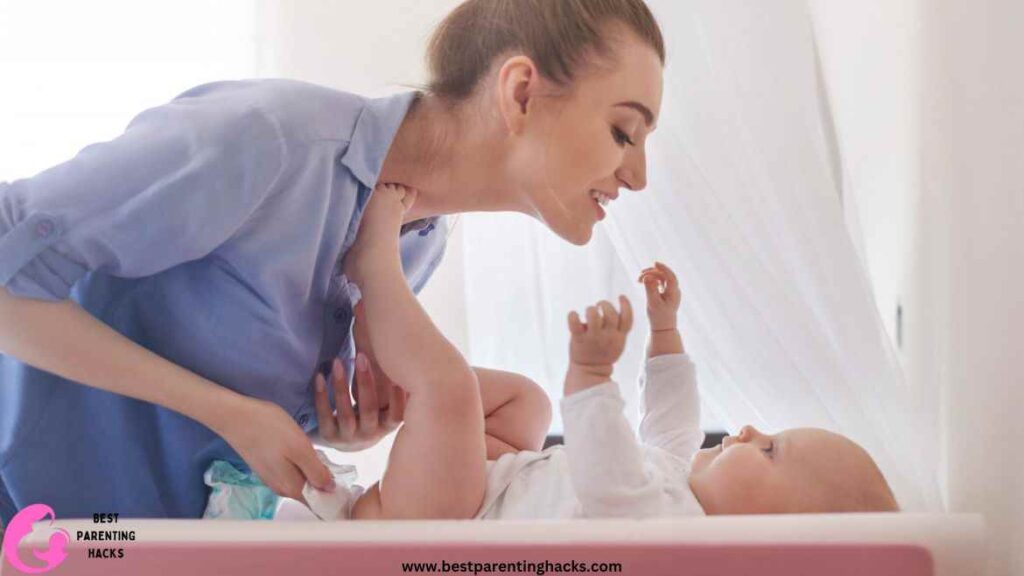
Behavioral Techniques
Putting behavioral strategies into practice will help you and your child enjoy dressing more.
1. Positive Reinforcement: Give your child lots of praise both before and after dressing. Positive connections may be formed with the technique as a result.
2. Calm and Reassuring Approach: Infants are sensitive to your feelings. Remaining collected and at ease might aid in calming them.
3. Routine and Consistency: By creating a schedule your kid can anticipate, you can lessen resistance.
4. Patience: Recognize that going through difficult days won’t always be easy. Navigating the most difficult times requires patience.
5. Bonding Opportunity: Make the most of this opportunity to strengthen your relationship with your child. To establish a safe and loving environment, sing, talk, and make eye contact.
When to Seek Professional Advice
It could be necessary to get expert counsel if you have severe reactions or ongoing pain when dressing. This can indicate problems with sensory processing or other developmental challenges. A pediatrician can advise you and, if required, send you to a specialist for additional assessment. It is important to stay vigilant for any signs of allergies, skin irritation, or persistent and unusual changes, in behavior.

Conclusion
It might be a trial-and-error process to get your infant used to the post-bath clothing ritual. Since every infant is different, what suits one may not suit another. The key is to remain observant, adaptable, and understanding. You may establish a schedule that is most effective for you both by learning about your baby’s requirements and trying out various approaches. Recall that the goal here is to create a relationship based on comfort, trust, and more than simply getting dressed. It is not just about getting dressed. This practice has the potential to become a valued part of your routine, full of laughter and lovely moments shared with others if you spend enough time and attention on it.
FAQs
1. Why does my infant cry when changing clothes after taking a bath?
• The unease of changing temperatures and the feel of clothing against their skin can cause babies to scream. It’s a typical response to an abrupt shift in perception.
2. How can I help my infant dress more easily after a bath?
• Choose cozy, wearable clothes, warm the space and the infant’s clothing, and employ distraction strategies like toys or music.
3. Is it common for infants to find dressing uncomfortable?
• Given their growing sensory system and fondness for the warmth and comfort of the bath, it is a frequent problem for many newborns.
4. Could a problem with sensory processing be the cause of my baby’s discomfort?
•To rule out sensory processing problems, it’s worth talking to a pediatrician if the discomfort is severe and persistent.
5. What kinds of clothing are ideal for a baby who detests dressing themselves?
• The best clothing is cozy and soft, with simple fasteners like snaps or zippers. Steer clear of clothing that is too tight or has abrasive materials.
6. Can my baby’s pain be eased by changing the time of bath time?
• It is true that bathing your infant when they aren’t very exhausted or hungry will facilitate the dressing procedure afterward.
7. What should I do if these tactics don’t work?
• Have patience and never stop trying out new methods. See your pediatrician for more guidance if the problem continues.

